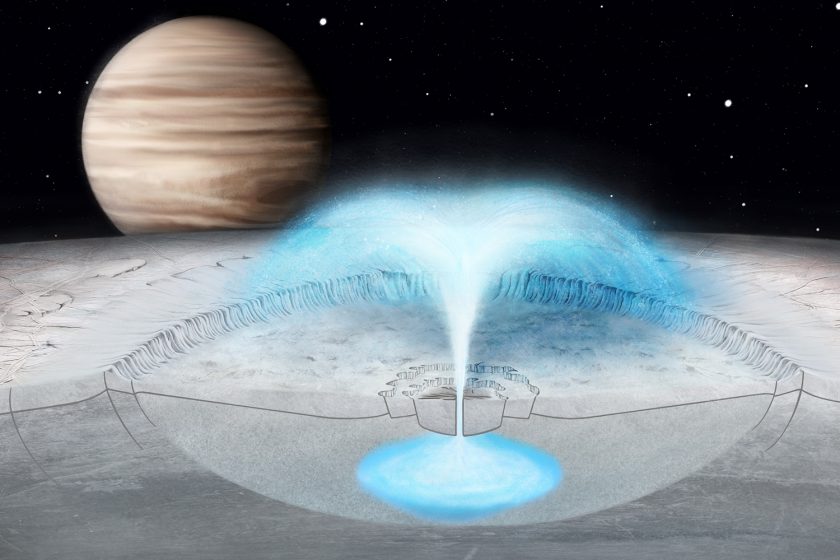Europa’s Icy Plumes
October 29, 2021

The cryovolcanoes of Jupiter’s moon Europa are a space spectacle, shooting plumes of ice miles high. Thanks to research from the Jackson School of Geosciences and Stanford University, scientists are learning more about how the plumes originate and whether they could contain elements needed to support life.
“Understanding where these water plumes are coming from is very important for knowing whether future Europa explorers could have a chance to actually detect life from space,” said Gregor Steinbrügge, who led the research when he was a postdoctoral researcher at the University of Texas Institute for Geophysics (UTIG) and is now a postdoctoral research fellow at Stanford. The results were published in November 2020 in Geophysical Research Letters.
The researchers modeled how melting and subsequent freezing of an impact crater could cause a cryovolcanic plume. In their model, when a brine pocket at the center of the crater began freezing, it generated pressure that eventually resulted in a plume over a mile high. The eruption left a distinguishing mark: a spider-shaped feature on Europa’s surface that was photographed by NASA’s spacecraft Galileo.
The study also estimates the saltiness of Europa’s frozen surface and ocean, which could affect its transparency to radar waves. The calculations show Europa’s ocean may be about one-fifth as salty as Earth’s ocean. This information will help calibrate the Europa Clipper mission’s radar sounder so it can collect data from Europa’s interior.
That radar sounder — called Radar for Europa Assessment and Sounding: Ocean to Near-surface (REASON) — is currently being developed at UTIG.
Back to the Newsletter